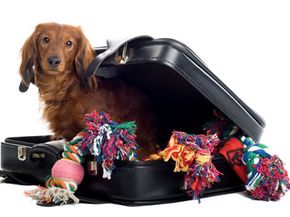Sheila Burnford's 1961 book "The Incredible Journey" tells of two dogs and a cat making their way across Canada in search of their dearly beloved owners. The owners had left the animals with a family friend during a trip, and when the animals are mistakenly abandoned by a caretaker, they set out to find their family. The arduous and challenging trip could have taken the animals' lives at any time, and indeed, when the animals can't be found, their masters assume the worst. However, it's unlikely this book would have found such acclaim and spawned two movies if it featured that kind of dour ending, so there's a heartwarming scene in which pets and owners reunite.
While we love to watch the ingenuity of animals on the silver screen, we certainly don't want our own Fido or Princess Whiskers deciding to make incredible journeys of their own. So when a person is moving, or even just taking a short-term vacation, he or she might choose to ship the family pets. Pets might also be shipped if they're ordered from a breeder across the country, or if they're heading off to show their merits at a dog or cat show. Some animals headed for zoos also travel this way.
Advertisement
But does the word "shipping" bring to mind dinged packages, broken Netflix discs and lost letters? Surely it's not safe for an animal to be shipped from place to place like cargo, you're thinking. Well, have no fear. There are many rules in place to ensure that shipped pets reach their destination in one piece; in fact, the rules can be so complex and detailed for different destinations that it's unlikely that humans would travel at all if they had to meet as many requirements.
Pet shipping is something that pet owners can take upon themselves to do, but owners also have the option of hiring a service to do it for them. Animal relocation or pet shipping services often market themselves as "pet travel agents"; they take care of the paperwork and arrangements that accompany a pet move. So whether you're going to do it yourself, or if you want to see just how those pet shipping services earn their money, let's take a look at the incredible journey that a shipped pet goes on.
Advertisement




